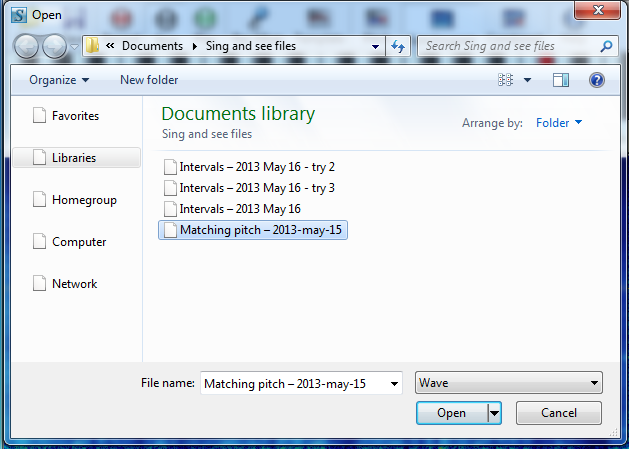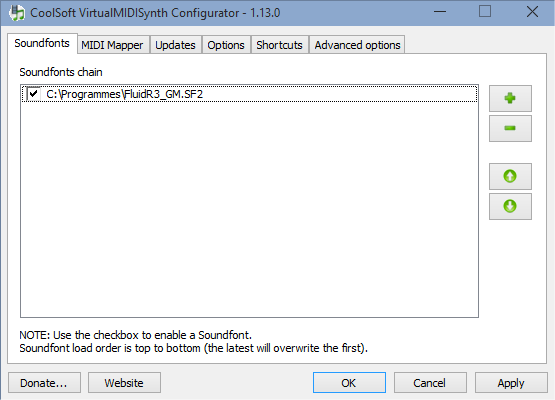 So far in these lessons we’ve covered the basics of using the program, and gone through some pitch and singing exercises. Today we’re going to look at keeping consistent volume while changing notes.
So far in these lessons we’ve covered the basics of using the program, and gone through some pitch and singing exercises. Today we’re going to look at keeping consistent volume while changing notes.
- Keeping your pitch while maintaining an even volume
- Singing intervals and triads while maintaining an even volume
- Look at your progress! – Opening and replaying saved files
Get ready to sing!
Make sure your mic’s plugged in, Sing & See has been loaded, and get ready to sing. Try some warm up exercises such as these.
Keeping your volume steady
The Level Meter display shows how loud you are singing. To see this just take note of the green bar to the right, which lights up when you sing.
The actual loudness of the voice will depend on your mic, how far it is away from your mouth, and how much amplification is given by your recording device – and of course how loud you are singing. The pitch algorithm works best when the volume is between 2 and 9.5, so for the purposes of this exercise we’ll try to keep it steadily around 7.
When singers use a mic while singing, it helps their performance if they are able to maintain a relatively even volume. Large fluctuations in volume can make it hard for the sound technician to get a good mix, as your voice may ‘jump out’ too much or become buried under the instruments.
Keeping this in mind, the aim of this lesson is to maintain a steady volume of around 7, while doing the exercises from the past 4 sessions.
Keeping a well leveled pitch
The first step today is copying the exercise of Page 2 while keeping a consistent volume. If your pitch is already improving, this might be an extra little challenge. Try holding a steady note at a steady volume.
Now try another note on the scale at the same volume. You could switch between octaves – sing an A3 and a A4 and see how closely you can match the volume. You might find at first that the higher volume than the lower ones, and it might take some practice to get them at similar levels.
Steady intervals and triads
- Play two notes, let’s say a C and an E, and using the techniques from a couple of lessons ago, picture the notes and then sing them. As you’ve practiced this before, you should be able to do it relatively steadily. Now try to do this same exercise while keeping the volume at about 7.It’s harder – but with practice it can be done. If you find it too hard, try doing the exercise at a slower speed, and breathing between the notes. If you manage to get it right a few times in a row, your muscle memory will kick in, and you will soon be able to do it at different speeds.
- Try doing the same exercise with triads. Again, it may be harder as you move through the notes to hit the correct note and maintain a steady volume, but this will train the strength and agility of your voice.
Review
If you’ve been saving your work, now is a good time to open your first files. Click on the “Open” button or select “File”->”Open” in the menu. In the File Open dialog box, select the file from the your singing on day 1.

Click Open and the file will be loaded into Sing & See. You need to press on the “Play” button for it to be played back. This will also display the pitch line.
Have a look at your singing from day 1 – you should be able to hear that your voice is steadier and that you’re more on pitch. Continual practice will see even more success!
Happy singing!



 So far in these lessons we’ve covered the basics of using the program, and gone through some pitch and singing exercises. Today we’re going to look at keeping consistent volume while changing notes.
So far in these lessons we’ve covered the basics of using the program, and gone through some pitch and singing exercises. Today we’re going to look at keeping consistent volume while changing notes.
